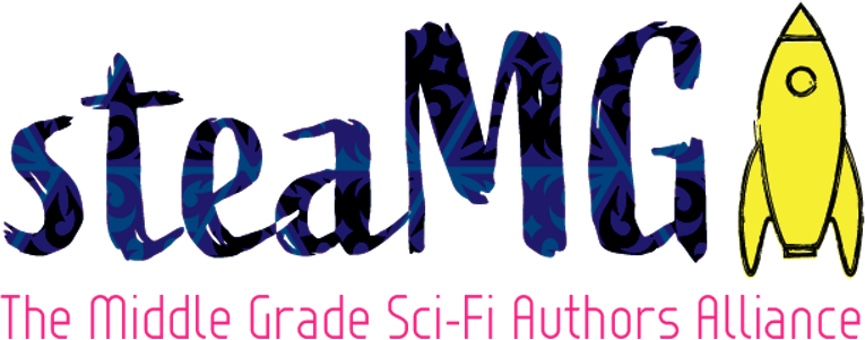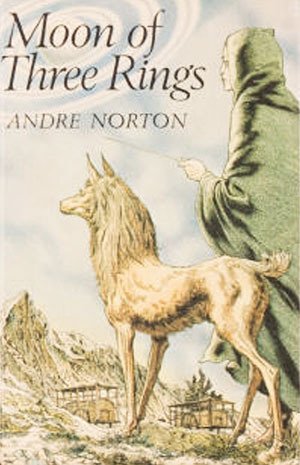Please welcome our special guest Holly Schofield who has agreed to talk about the importance of short fiction for today’s young sci-fi reader.
photo source: Lucas V. Barbosa - Own work, Public Domain, https://commons.wikimedia.org/w/index.php?curid=3270145
At age eleven, I routinely hung out in the adult section of the public library, shifting from foot-to-foot, reading back issues of Analog magazine until stern librarians enforced the "no children allowed" rule, chasing me back to the bland safety of the children's section. Short stories always appealed to me, even back when I didn't understand half of what I read and when MG and YA weren't yet marketing labels. I loved--and still love--the quick, sharp encapsulation of an idea, a world, a moment--that prismatic effect of a small idea expanding into a large rainbow of thoughts.
Although the act of sneaking my fiction may have added slightly to my enjoyment, I'd prefer that today's kids don't have to sample their fiction that way, but are offered instead a smorgasbord of delights. And delights there are! You just have to find them. Most adult science fiction magazines do crossover into YA territory: Apex, Uncanny, Lightspeed, and Asimov's all publish YA short stories sometimes. Tor.com's 2018 list of best YA SFF includes three short story collections. Of the 70+ stories I've had published, 23 are YA-themed but only nine are in solely-YA publications. Several YA anthology series are worth noting for their double focus on science and diversity:
Issues in Earth Science is "dedicated to raising awareness of the science of our world and our place in it. It provides essays, challenges, a forum for discussion, and fictional stories related to the Earth and Space Sciences." As well as various tools for teachers, the website provides a dozen free online STEM stories intended for classroom use, each featuring a YA protagonist.
Dreaming Robot's Young Explorer's Adventure Guide contains science fiction stories aimed at middle grade readers with a focus on diversity and representation. "One of the qualities that makes this yearly anthology such a treat to read is the wide range of futuristic possibilities that planet Earth and its occupants may encounter, realities that will keep readers wondering long after the book is closed" according to the starred Kirkus review. The fourth volume was just released and the fifth volume will be out in early 2020.
Brave New Girls features brainy young female protagonists who use their smarts to save the day. Proceeds from sales are donated to the Society of Women Engineers scholarship fund. The fourth volume will be out July 2019.
What's the appeal of such anthologies? Short stories are more than just a palatable way for kids to increase their science literacy. If the science is accurate, the learning is better retained[1] and meta-cognition is improved[2]. (Note: the science must be accurate!). There is a fallacy that kids are uncomfortable with the idea that a book might teach them something[3] but kids love to learn! With short stories, a wide variety of topics can be presented quickly and, importantly, serve to pique their interest. A quick flash piece about a black hole may encourage them to learn more when they see a "picture" of a black hole spread across the news.
< The first image ever taken of the event horizon of a supermassive black hole, captured by the Event Horizon Telescope in 2017. (Event Horizon Telescope) >
Audio is another great way for kids to absorb both science and fiction. Cast of Wonders has several hundred free YA podcasts, most of which are about half an hour long (about 3,000 words). Perfect for that bus ride to school or that lazy Saturday morning in bed, without the investment of time and focus that a novel requires.
Although traditionally-published novels will always have a strong influence on young minds, short stories (and self-published novels) are able to react more quickly to societal changes. (I've had a story go from submission to publication within just a few hours). That allows short stories to incorporate social justice movements much faster. Traditional publishing can get there too, but it requires more time. In one inspiring example, the International Publishers Association has partnered with the United Nations to launch a book club for children ages six to twelve, focusing on the UN’s 17 sustainable development goals[4], releasing a selection of new titles each month in Arabic, Chinese, English, French, Russian, and Spanish. Those first set of books will come out in 2021--certainly a laudable achievement in only two years; however, Brave New Girls and Young Explorer's Adventure Guide will have published a total of over eighty new stories during that time, each one attuned specifically to today's young adults.
Female protagonists are one example of where short stories can have a hugely positive influence. In the classic 1983 study where kids were asked to draw pictures of scientists, less than one percent drew females. Currently, that figure is up to a heartening 28 percent -- better, but still not great. Short stories can help reshape those persistent stereotypes: if a child reads ten stories of 5,000 words each about female scientists, they've been exposed to ten examples of scientists, rather than the single one they would meet in a 50,000-word novel. Such stories may inspire them to seek out Her Stem Story for anecdotes about real scientists or A Mighty Girl for list of books, such as this one about female environmentalists .
“While play-acting grim scenarios day in and day out may sound like a good recipe for clinical depression, it’s actually weirdly uplifting. Rehearsing for catastrophe has made me positive that I have the problem-solving skills to deal with tough situations and come out the other side smiling." ― Chris Hadfield, An Astronaut's Guide to Life on Earth
The turbulence of the 1960s meant I needed those stolen moments in the library in order to cope. Today's kids, born into a world of climate change and political turmoil, are no different. They need tools. Tools to help them grow, solve problems logically, and give them positive action plans. Tools like optimism. In the afterword to the Nevertheless anthology, Greg Bechtel says it well[5]: "Optimism, at its best, is a weaponized form of hope….<it offers> counter-narratives to our own persistent stories of fear: of change, of deterioration and loss of stability, of chaos, of death…" STEM-based short stories can present that reality to kids, give them those tools, and instill that optimism--a large outcome for such a small input.
__
Holly Schofield travels through time at the rate of one second per second, oscillating between the alternate realities of city and country life. Her stories of skiffy hopepunk have appeared in such publications as Analog, Lightspeed, Cast of Wonders, Brave New Girls, and Young Explorer's Adventure Guide, are used in university curricula, and have been translated into several languages. She hopes to save the world through science fiction and homegrown heritage tomatoes. Find a complete list of her stories at hollyschofield.wordpress.com.
[1] Diana C. Rice. "Using Trade Books in Teaching Elementary Science: Facts and Fallacies". The Reading Teacher Vol. 55, No. 6 (Mar., 2002), pp. 552-565
[2] Marsh, E.J., Butler, A.C. & Umanath, S. "Using Fictional Sources in the Classroom: Applications from Cognitive Psychology". Educational Psychology Review (2012) 24: 449
[3] Farah Mendlesohn. 2009. The Inter-Galactic Playground: A Critical Study of Children's and Teens' Science Fiction (Critical Explorations in Science Fiction and Fantasy). McFarland. 50.
[4] The SDGs include poverty, hunger, health, education, gender equality, clean water, sanitation, affordable energy, decent work, inequality, urbanization, global warming, environment, social justice and peace. https://sustainabledevelopment.un.org/content/documents/4538pressowg13.pdf
[5] Rhonda Parrish and Greg Bechtel. 2018. Nevertheless (Tesseracts 21). Edge. 243







